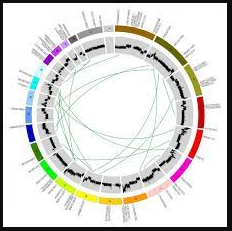Introductions
In the present computerized age, information has become the backbone of associations across all enterprises. In any case, the subject of who ought to approach this important asset is a subject of extraordinary discussion. Enter the Who Information Sharing Strategy, a historic drive that expects to upset how information is shared and used. This arrangement perceives the significance of information in driving development, further developing general well-being results, and tending to worldwide difficulties. By elevating a cooperative way to deal with information sharing, it enables scientists, policymakers, and medical care experts to use the force of information to pursue informed choices and foster powerful techniques. In this article, we will dig into the meaning of the Who Information Sharing Arrangement, investigating its likely advantages, difficulties, and suggestions for the eventual fate of information-driven direction. Prepare to find out how this arrangement is moulding how we saddle the force of information for everyone's benefit.
Understanding the WHO Information-Sharing Strategy
The WHO Information Sharing Arrangement is a drive laid out by the World Wellbeing Association (WHO) determined to advance the sharing of wellbeing-related information to help general well-being. This strategy perceives that information sharing is pivotal for progressing logical examination, further developing sickness reconnaissance, and improving medical service conveyance. It energizes the open sharing of information among scientists, medical care associations, and other pertinent partners to establish a cooperative climate that encourages development and speeds up the improvement of powerful interventions.
The strategy frames the key rules that ought to direct information-sharing endeavours, including straightforwardness, responsibility, and regard for protection and secrecy. It underscores the requirement for information to be shared promptly, without unnecessary limitations or boundaries. By advancing a culture of information sharing, the Who Information Sharing Strategy intends to defeat the conventional siloed way to deal with information and support the pooling of assets and information for the more noteworthy advantage of general well-being.
The Who Information Sharing Arrangement isn't simply appropriate to customary well-being information yet additionally reaches out to different regions like genomics, clinical preliminaries, and social determinants of well-being. It perceives that an exhaustive way to deal with information sharing is fundamental for tending to the complicated difficulties confronting medical service frameworks around the world.
Key standards of the WHO Information Sharing Strategy
The WHO Information Sharing Approach is based on a few key rules that guide the sharing and utilization of information to serve general well-being. These standards include:
1. Straightforwardness:

The approach stresses the significance of straightforwardness in information-sharing endeavours. It urges associations to transparently impart information through suitable metadata and documentation to guarantee the reproducibility and dependability of exploration discoveries. Straightforward information sharing empowers specialists and policymakers to assess and expand existing information, prompting more hearty and proof-based navigation.
2. Responsibility:

The Who Information Sharing Arrangement considers associations responsible for their information-sharing practices. It advances capable information stewardship by expecting associations to have clear information on their board plans and administration structures. Responsibility guarantees that information is taken care of morally and in compliance with applicable guidelines and rules.
3. Security and secrecy:

The arrangement perceives the need to safeguard people's protection and keep up with the classification of delicate well-being information. It urges associations to execute proper measures to protect the information, including de-recognizable proof strategies and secure information stockpiling and transmission conventions. Protection and classification are fundamental for fabricating trust among information benefactors and guaranteeing the moral utilization of shared information.
Advantages of informational participation in medical services
Information about medical services offers various advantages that can change how we comprehend and address wellbeing-related difficulties. Here are a few key advantages:
1. Sped-up examination and development:
Information sharing empowers scientists to get to a bigger pool of information, prompting more vigorous and generalizable exploration discoveries. By sharing information, specialists can team up and expand upon one another's work, speeding up the speed of disclosure and advancement. This can prompt the advancement of new medicines, interventions, and preventive techniques that can work on understanding results and saving lives.
2. Further developed general well-being reconnaissance:
Opportune and extensive information sharing are critical for successful sickness observation and episode reaction. By progressively sharing well-being information, general well-being organizations can recognize and respond to arising dangers all the more quickly, forestalling the spread of irresistible infections and limiting their effect on populations. Information sharing additionally works with the checking of sickness patterns and the assessment of general well-being interventions, empowering policymakers to settle on evidence-based choices.
3. Upgraded medical care conveyance:
Information sharing empowers medical care suppliers to get a more complete perspective on patients' well-being status and clinical history. This thorough view can prompt better-informed clinical choices, further developed care coordination and more customized treatment plans. Information sharing likewise upholds the advancement of prescient examination and the choice of emotionally supportive networks, which can assist with distinguishing high-risk patients, forestall unfavourable occasions, and upgrade asset assignments.
Difficulties and concerns connected with information sharing
While information sharing offers critical advantages, it additionally presents difficulties and raises worries that should be addressed. A portion of the vital difficulties and concerns include:
1. Information protection and security:

The sharing of well-being information raises worries about security. Delicate well-being data can be taken advantage of while perhaps not sufficiently safeguarded, prompting expected mischief among people. Associations should carry out vigorous information insurance measures, for example, encryption and access controls, to guarantee the protection and security of shared information.
2. Information administration and proprietorship:

Deciding possession and administration of shared information can be perplexing, particularly when different associations are involved. Clear rules and arrangements should be laid out to resolve issues connected with information possession, access privileges, and protected innovation. Information administration structures can assist with guaranteeing that all partners have a voice in the direction and that information is utilized fairly and impartially.
3. Information quality and interoperability:

Information sharing depends on the accessibility of top-notch and interoperable information. Be that as it may, information gathered from various sources might have varieties in organizations, principles, and quality, making it trying to coordinate and examine. Endeavours ought to be made to normalize information assortment and guarantee information quality to expand the worth and utility of shared information.
Instances of fruitful information-sharing drives
A few fruitful information-sharing drives have shown the extraordinary capability of cooperative information partaking in medical care. Here are a few models:
1. The Worldwide Drive on Sharing All Flu Information (GISAID):

GISAID is a global stage that advances the sharing of flu infection information for worldwide reconnaissance and exploration. By sharing hereditary successions and related clinical information, GISAID empowers scientists to screen the advancement of flu infections, track arising strains, and foster more compelling immunizations and antiviral medications.
2. The Disease Genome Map book (TCGA):

TCGA is a cooperative exertion that expects to portray the genomic changes related to various kinds of malignant growth. By sharing genomic information from a large number of disease patients, TCGA has worked with notable disclosures and high-level comprehension we might interpret malignant growth science. This common information has made it ready for customized malignant growth medicines and the improvement of designated treatments.
3. The We All Exploration Program:

The We All Exploration Program, sent off by the Public Organizations of Wellbeing in the US, means to assemble well-being information from 1,000,000 assorted members to speed up the biomedical examination. By sharing an extensive variety of well-being information, including genomic, clinical, and way of life data, the program means to uncover new bits of knowledge into illness counteraction, finding, and treatment. The program likewise underlines member commitment and strengthening, guaranteeing that people have command over their information and are effectively engaged with the examination interaction.
How the WHO Information Sharing Approach advances coordinated effort and development
The Who Information Sharing Strategy assumes a significant part in advancing coordinated effort and development in the medical services area. By empowering the open sharing of information, the strategy separates storehouses and cultivates a culture of joint effort among specialists, medical services associations, and policymakers. This cooperative methodology empowers the pooling of assets and information, prompting more vigorous examination discoveries and inventive answers for complex well-being challenges.
The approach likewise advances the improvement of information-sharing stages and frameworks that work with the revelation, access, and utilization of shared information. These stages furnish scientists and different partners with a concentrated and normalized method for getting to and examining information, taking out the obstructions and shortcomings related to information fracture.
Moreover, the Who Information Sharing Strategy empowers the reception of open science rehearses, for example, pre-enlistment of studies and sharing of examination conventions and information investigation code. By advancing straightforwardness and reproducibility in research, the strategy fortifies the logical thoroughness and legitimacy of examination discoveries, improving trust and trust in the exploration of local areas.
Executing the WHO Information Sharing Arrangement in medical services associations
Carrying out the Who Information Sharing Strategy in medical services associations requires an exhaustive methodology that tends to specialized, social, and moral contemplations. Here are some vital stages to consider:
1. Foster information administration systems:
Medical care associations ought to lay out clear information administration structures that frame jobs, obligations, and cycles connected with information sharing. These structures ought to resolve issues, for example, information proprietorship, access freedoms, information quality, and protection and security.
2. Put resources into information foundation and interoperability:
Medical care associations need to put resources into vigorous information framework and interoperability principles to work with the consistent sharing and coordination of information. This might include executing wellbeing data trade frameworks, taking on normalized information designs, and guaranteeing similarity with existing information frameworks.
3. Advance a culture of information sharing:
Medical care associations ought to cultivate a culture that qualities and advances information sharing. This might include giving preparation and schooling on the advantages and best acts of information sharing, perceiving and compensating information sharing endeavours, and making motivations for coordinated effort and information trade.
4. Guarantee consistency with moral and legitimate prerequisites:
Information imparting should be directed in consistency to moral and lawful necessities, for example, getting educated assent from information givers and safeguarding people's security and secrecy. Medical services associations ought to lay out cycles and shields to guarantee moral information imparting practices and consistency to important guidelines and rules.
Moral contemplations in information sharing
Information partaking in medical services raises significant moral contemplations that should be painstakingly tended to. A few vital moral standards to consider include:
1. Regard for protection and secrecy:

Information sharing ought to regard people's security and keep up with the classification of delicate well-being data. Associations ought to carry out measures to de-distinguish information, limit the gamble of re-ID, and guarantee secure information stockpiling and transmission.
2. Informed assent:

Information sharing ought to be led with educated assent regarding information donors. People ought to be completely educated about the reason, dangers, and likely advantages of information sharing and reserve the privilege to control how their information is utilized.
3. Impartial access and advantage sharing:

Information sharing ought to elevate evenhanded admittance to information and guarantee that the advantages got from shared information are appropriated reasonably among all partners. Endeavours ought to be made to address power uneven characters, safeguard the interests of underestimated networks, and guarantee that information sharing doesn't prompt double-dealing or damage.
4. Transparency and responsibility:

Information sharing ought to be led straightforwardly and responsibly. Associations ought to be straightforward about their information-sharing practices, administration designs, and possible irreconcilable circumstances. They ought to likewise be responsible for the utilization of shared information and the possible effect on people and networks.
Conclusion: The fate of information partaking in medical services

The Who Information Sharing Strategy addresses a change in outlook in how information is shared and used in the medical care area. By elevating a cooperative way to deal with information sharing, the strategy can reform medical services conveyance, examination, and strategy making. Be that as it may, the effective execution of the approach requires tending to specialized, social, and moral difficulties. Medical care associations should put resources into the information framework, cultivate a culture of information sharing, and guarantee consistency with moral and legitimate prerequisites.
As we push ahead, it is fundamental to perceive the tremendous force of information partaking in driving advancement, further developing general well-being results, and tending to worldwide difficulties. By tackling the aggregate insight and mastery of different partners, we can open the maximum capacity of information and make a better and more impartial world. The Who Information Sharing Strategy is a huge step towards understanding this vision, offering a guide for the fate of information-driven dynamics in medical services. Allow us to embrace this approach and take advantage of the chances it presents to change medical care for everyone's benefit.




0 Comments